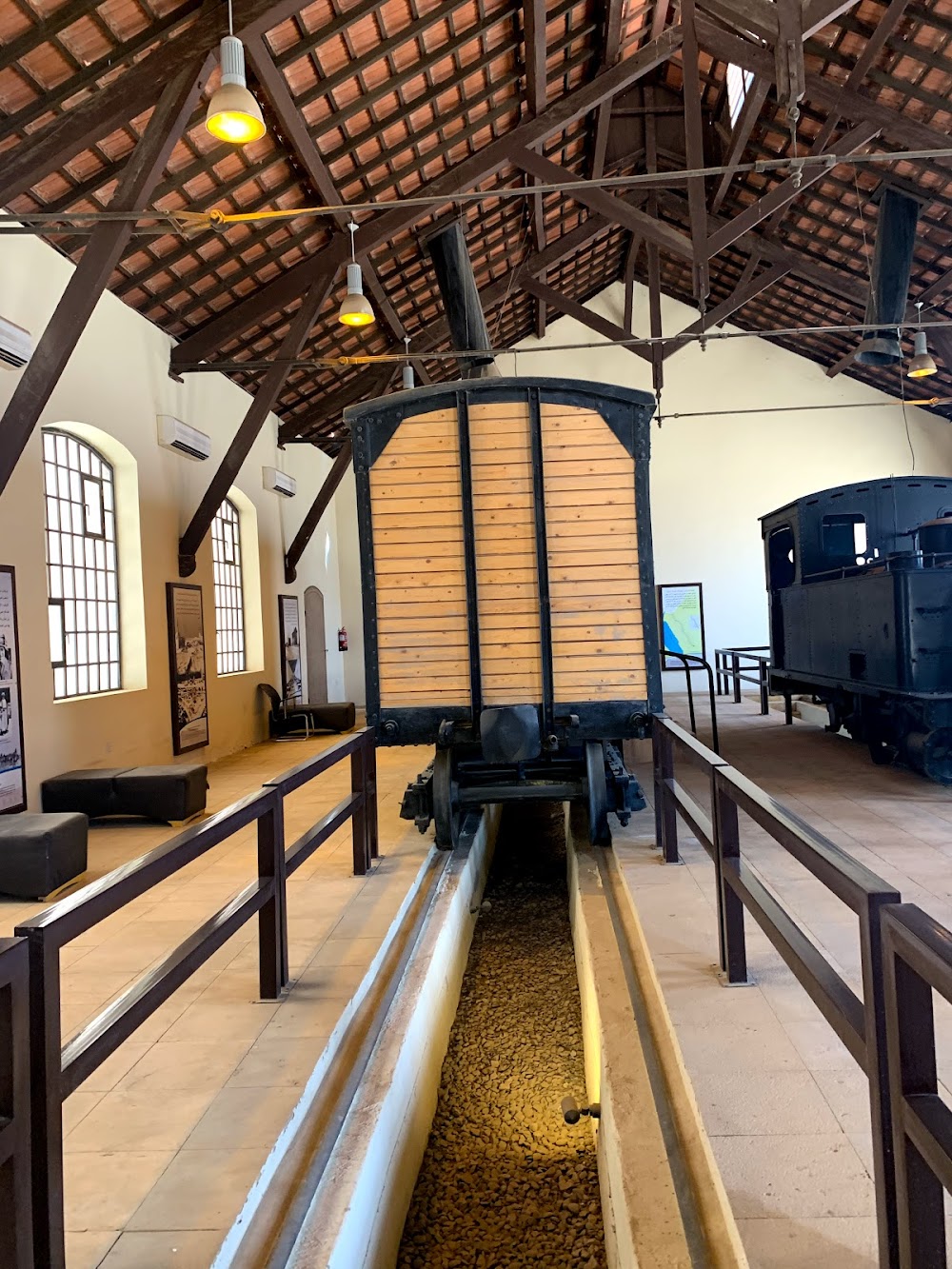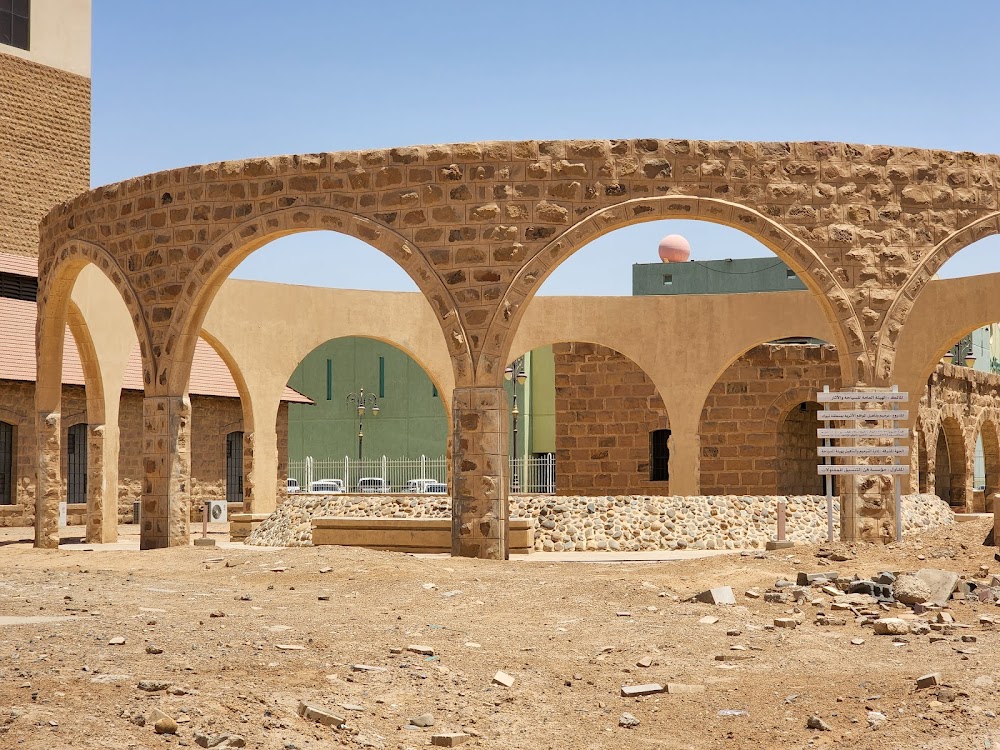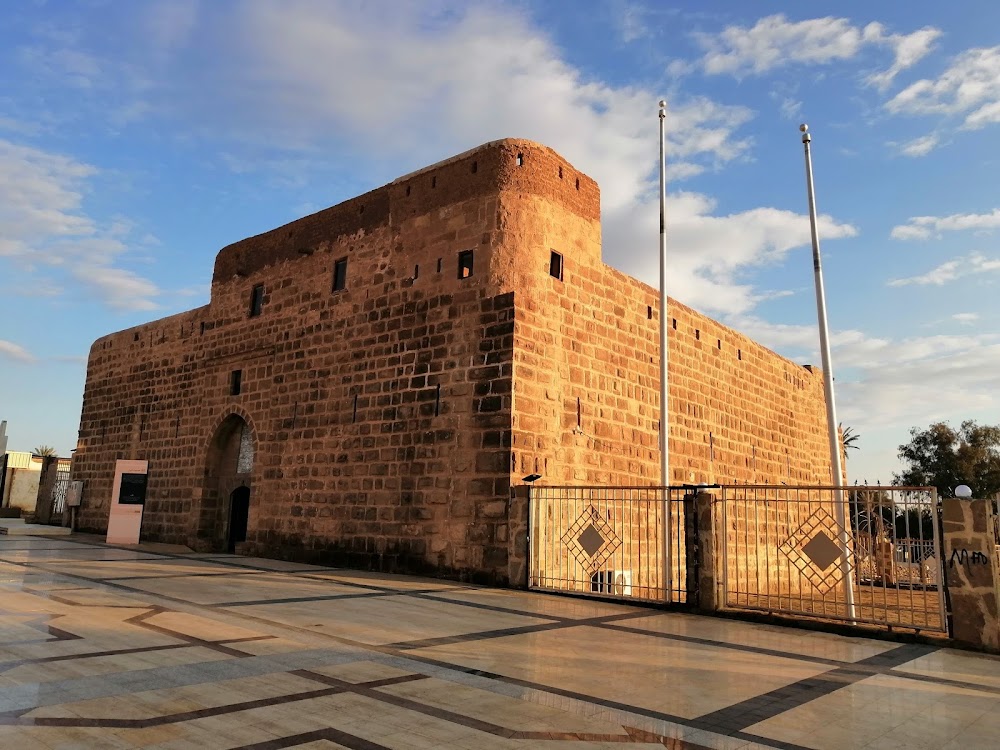Tabuk Railway Station (محطة قطار تبوك)
Overview
Tabuk Station: A Historical Marvel
Tabuk Station, also known as the Hijaz Railway Station, is a captivating historical landmark located in the heart of Tabuk, Saudi Arabia. This station played a vital role in the ambitious Hijaz Railway project, which aimed to connect Damascus in Syria with the holy cities of Mecca and Medina. Designed to facilitate pilgrimages and enhance trade routes across the Ottoman Empire, the station stands as a testament to a remarkable era of engineering and vision.
Constructed in the early 20th century, Tabuk Station showcases the engineering prowess of its time. The Hijaz Railway project began in 1900 under the leadership of Sultan Abdul Hamid II, employing skilled engineers and laborers from across the empire, with many materials sourced locally. The station was strategically designed as a key transit and supply point, featuring several robust buildings made primarily of basalt stones and reinforced concrete. This construction not only reflects durability against the harsh desert climate but also embodies a blend of Ottoman and Islamic architectural styles, characterized by arched windows and intricate wooden frameworks.
One of the station’s most notable features is its impressive water tower, essential for refueling the steam locomotives that traversed the vast distances between stops. Adjacent to the main terminal, workshops and maintenance sheds were established to service and repair the steam engines, ensuring the smooth operation of the railway. The station precinct also includes staff quarters and guesthouses that once housed travelers and railway workers, designed to provide comfort and respite from the severe weather conditions of the desert landscape.
Building the railway line presented significant challenges due to the harsh terrain, with sandstorms and extreme temperatures posing constant obstacles for construction crews. Despite these difficulties, the railway became operational by 1908 and served as an efficient transport system until World War I disrupted its operations and caused considerable damage to its infrastructure.
In the aftermath of the war, the Hijaz Railway saw sporadic use and gradually fell into disrepair due to neglect and advancements in transportation technology. However, recent years have witnessed a renewed interest in preserving Tabuk Station, with restoration efforts focusing on maintaining its authenticity and historical significance.
Today, Tabuk Station stands as a cultural and historical landmark, attracting historians, tourists, and railway enthusiasts alike. Visitors marvel at the architectural ingenuity and the rich historical narrative embodied within its walls. More than just a relic of the past, Tabuk Station symbolizes the region's vibrant history and the indomitable human spirit that forged connections across vast and unforgiving landscapes.






